PREVIOUS
The New Parliament of India – Part 2
October 6 , 2023
832 days
7796
0
(இதன் தமிழ் வடிவத்திற்கு இங்கே சொடுக்கவும்)
The New Parliament of India
Building Design & Features
- The New Parliament House was first used for official business on 19 September 2023 during the Parliament Special Session, with the name designation Parliament of India.
- The new parliament was crowned with the national anthem.
- Its ceiling will feature traditional-style carpeting and fresco paintings similar to those in Rashtrapati Bhawan.
- In order to preserve some of the qualities of the current parliament, shlokas will be written on the interior walls.
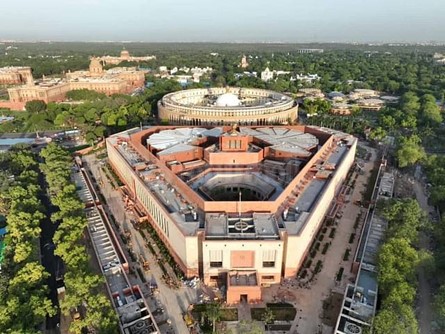
- As with the current structure, Dholpur stone will serve as the main building material.
- Red granite might take the place of red sandstone in various interior spaces.
- Construction will be done with extra care to minimize disruption and protect the environment.
- The Parliament House has 3 entrances, named Gyan Dwar (knowledge gate), Shakti Dwar (power gate), and Karma Dwar (karma gate).
- There are six guardian statues that man the three entrances, namely, Gaja, Ashwa, Garuda, Makar, Shardula, and Hams.

Environment Friendly
- Built using green construction techniques, the new building is supposed to reduce electricity consumption by 30%, compared to the old one.
- Rainwater-harvesting and water-recycling systems have been included.
- It has been designed to be more space efficient and meant to function for the next 150 years.
Earthquake-Safe
- Since Delhi is in seismic zone-V, the building is primed to be Earthquake-safe.
Constitution Hall
- The new building has a Constitution Hall, where the journey of Indian democracy has been documented.

Material from across India
- For the interior and exterior of the building, the construction materials have been brought in from across the country, including sandstone from Sarmathura in Dholpur and granite from Lakha village in Jaisalmer, Rajasthan.
- Similarly, the wood used in the decor is from Nagpur and craftsmen from Mumbai have led the wooden architecture design.
- Bhadohi weavers from Uttar Pradesh have made the traditional hand-knotted carpets for the building.
Gandhi Statue
- The 16-foot-tall bronze statue of Mahatma Gandhi, originally placed at the main entrance of Parliament in 1993, has been relocated between the old and new buildings.
- It now faces the old building, near the entrance used by the Lok Sabha Speaker.
- The statue has been a significant site for protests, gatherings, and photo-ops for students and Members of Parliament.
- It was created by renowned sculptor Ram V Sutar, a recipient of the Padma Bhushan award.

National Symbols
- The building is replete with national symbols, the Lion Capital of Ashoka.
- That weighs 9,500 kg and is 6.5 meters in height.
- It is visible even from a distance.
- To support this massive bronze sculpture, a structure of 6,500 kg was constructed on top of the central foyer.
- At the entrance, the Ashoka chakra and the words ‘Satyameva Jayate’ have been carved in stone.

Going Digital
- In line with the environment-friendly focus of the new Parliament, all records — House proceedings, questions and other business — are being digitized.
Galleries in the Building
- A gallery called ‘Shilp’ will exhibit textile installations from across India, along with pottery items made from all Indian states.
- The gallery Shilp Deergha (crafts gallery) was conceptualized with eight themes: Parv (festival), Swabalamban (self-reliance), Prakriti (nature), Ullas (joy), Gyan (wisdom), Samrasta (harmony), Astha (faith), and Yatra (journey).
- The gallery ‘Sthapatya’ will exhibit the iconic monuments of India, including those from the different states and UTs.
- Besides monuments, it also amalgamates yoga asanas.
Vaastu Shastra
- At all the entrances of the building, auspicious animals as guardian statues will be exhibited, based on their importance in Indian culture and vaastu shastra.
- These include the elephant, the horse, the eagle, the swan, and mythical creatures shardula and makara.
Foucault Pendulum
- A Foucault pendulum is installed inside the new Parliament building.
- This pendulum has been created by the National Council of Science Museum (NCSM) in Kolkata.
- It is the largest of its kind in India.
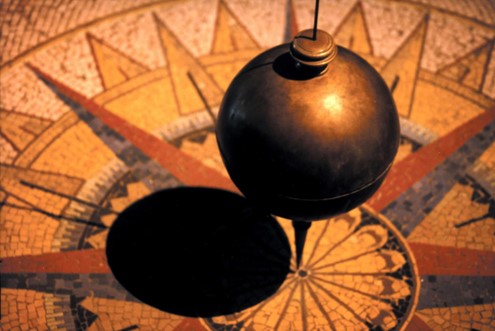
- It is standing at a towering height of 22 meters and weighing 36 kg.
- As it rotates on its axis, the pendulum almost reaches the floor, hanging from a skylight positioned at the top of the Constitution Hall.
- Its presence symbolizes the integration of India's concept with the vastness of the cosmos.
- At the latitude of Parliament, it takes 49 hours, 59 minutes and 18 seconds to complete one rotation.
- The Foucault pendulum, named after French physicist Léon Foucault, is used to demonstrate the earth’s rotation.
- The pendulum consists of a heavy bob suspended at the end of a long, strong wire from a fixed point in the ceiling.
- As the pendulum swings, the imaginary surface across which the wire and the bob swipe is called the plane of the swing.

Central Vista
- The Central Vista of New Delhi houses Rashtrapati Bhawan, Parliament House, North and South Block, India Gate, National Archives among others.
- The Central Vista Redevelopment Project is a project that aims to revamp the Central Vista, India’s central administrative area located near Raisina Hill, New Delhi.
- In December 1911, King George V made an announcement in Delhi Durbar (a grand assembly) to shift the capital of India from Calcutta to Delhi.
- Delhi Durbar was hosted to mark the coronation of King George V.
- The task of constructing a new city was given to Edwin Lutyens, and Herbert Baker, a prominent architect in South Africa.
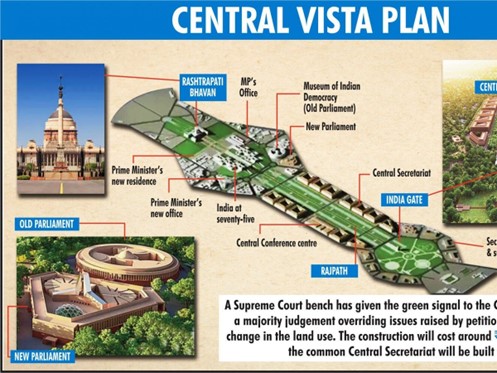
- Herbert Baker is also the architect of the Union buildings at Pretoria, South Africa.
- The old Parliament House building was designed by both Lutyens and Baker.
- Rashtrapati Bhavan was designed by Edwin Lutyens.
- The Secretariat, which includes both north and south blocks, was designed by Herbert Baker.
- The new Parliament House was created by Ahmedabad-based HCP Design, Planning and Management.
- That is designed and managed by architect Bimal Patel.
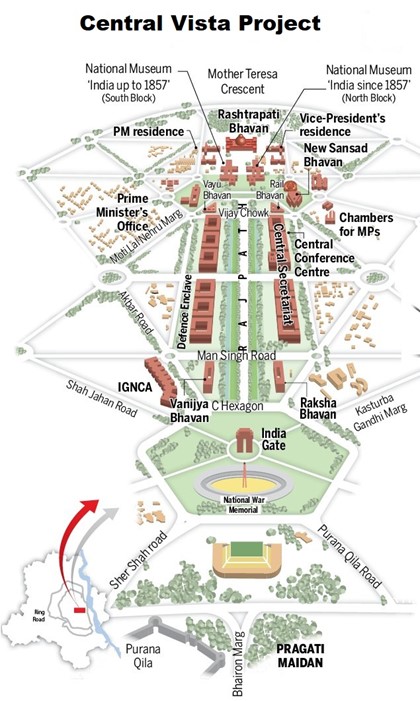
Interior decorations
- Murals are depicting maps of ancient India-protected monuments of ASI and UNESCO, etc. in the new parliament.
- 3 ceremonial entrance halls with huge brass images of Mahatma Gandhi, Chanakya, Gargi, Sardar Vallabhbhai Patel, B.R. Ambedkar, and the Chariot Wheel from the Sun Temple at Konark are on display.
- Reflecting the cultural diversity of India in line with the “Made in India” initiative Tripura’s epitome bamboo wood flooring and carpets from UP’s Mirzapur embellished the new Parliament.
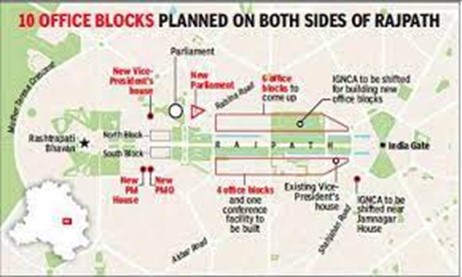
Significance of the new Parliament
- Symbol of the vision and aspirations of India, the spirit of change and continuity and will witness the making of India as ‘Aatmanirbhar Bharat’.
Expectations from the new Parliament
- The trend of increasing disruptions and long periods of deadlock is antithetical to the spirit of Parliament – law-making through debate, discussion, and consensus.
- Hence, the new Parliament offers an opportunity to seriously introspect on Parliamentary conduct and make Parliament more efficient and productive.
- The new Parliament should not only be the fountainhead/epitome of architectural excellence but should also work as a lighthouse to guide India in its ambitious journey of ‘new India@100’; ‘Ek Bharat, Shrestha Bharat’, etc.
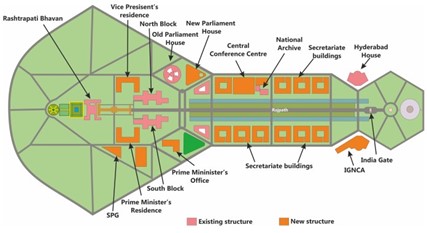
- India's new Parliament building is a state-of-the-art facility that showcases India's rich cultural heritage while providing modern amenities for effective legislative proceedings.
- The government plans to use both the buildings in conjunction for smooth functioning of parliamentary affairs.
- It not only reflects India's cultural diversity but also paves the way for an inclusive and efficient democratic process.
- As the nation embarks on this new chapter, the new Parliament building becomes a beacon of hope and unity, inspiring generations to come.
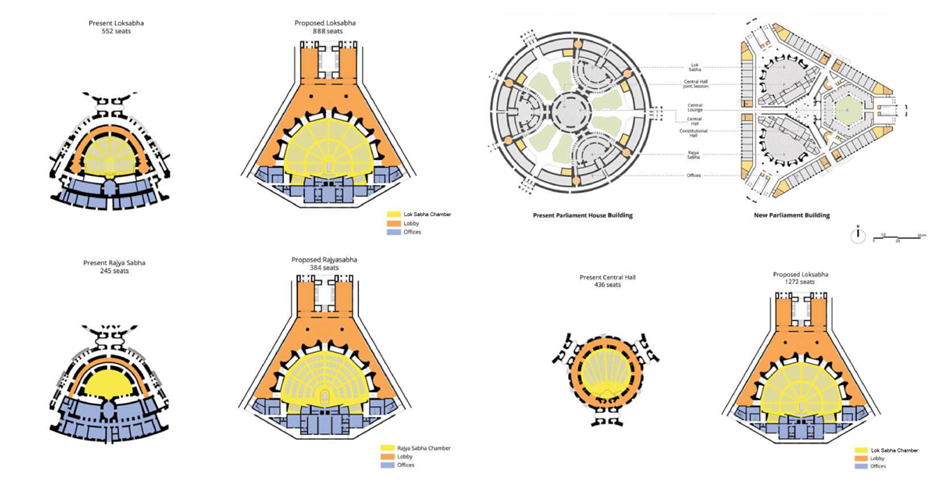
Leave a Reply
Your Comment is awaiting moderation.


